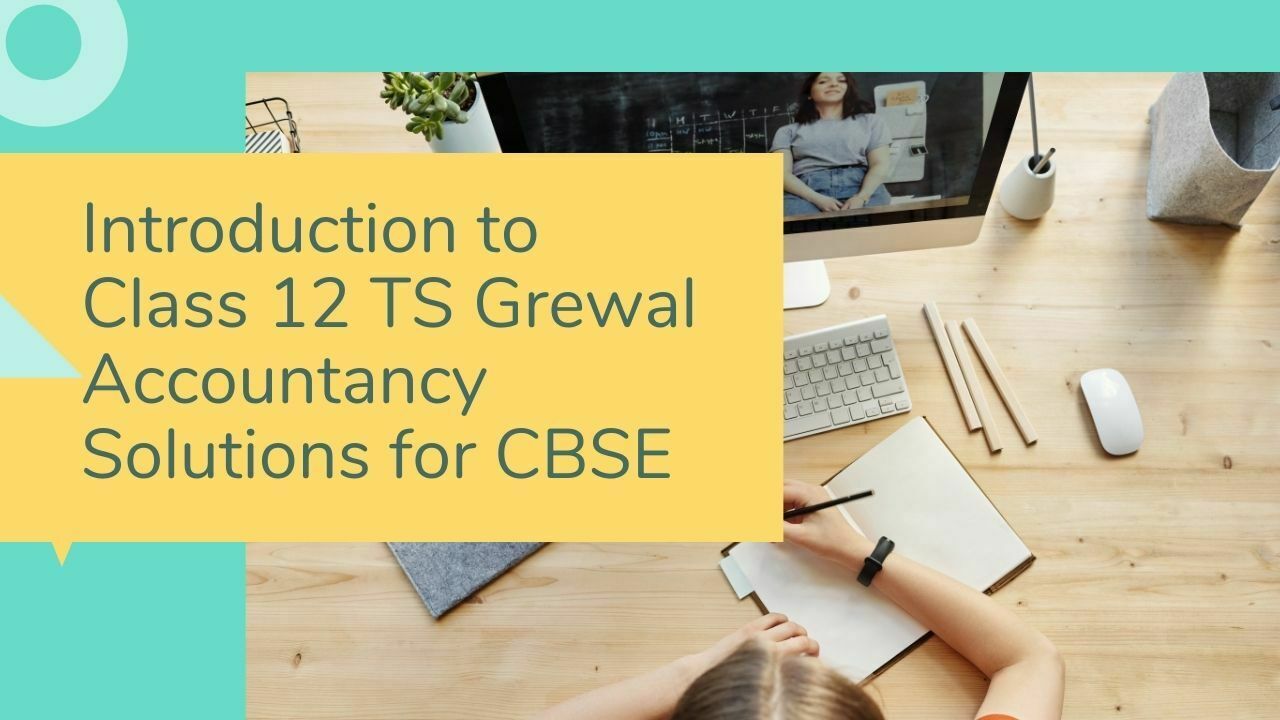Introduction to Class 12 TS Grewal Accountancy Solutions for CBSE

As we all know, Class 12 is the most defining year of a student’s academic life. Preparation for board exams begins early on during this year. More often than not, teachers encourage students to practice a wide range of questions based on Class 12 CBSE syllabus. This book enables a comprehensive study and practice of the basics of accountancy. TS Grewal Accountancy solutions play a crucial role in widening students’ field of practice and getting them ready just in time for board exams.
Chapters Covered in TS Grewal Accountancy Solutions:
There are two volumes in TS Grewal Class 12 solutions. The first volume has seven chapters, and the second volume has three.
The chapters in the first volume are:
Chapter 1: Company Accounts and Financial Statements for Non-Profit-Organisations
Organisations that do not work with a profit goal are called Non-profit-Organisations. Their main aim is the welfare of society, public benefit, and social causes. This gives the organisations a non-business entity status. As the organisations lack a profit motive, their accounting system is different. So, in this chapter, students learn to prepare financial statements, calculate the assets, liabilities, receipts and payments of such non-profit-organisations.
Chapter 2: Accounting for Partnership Firms – Fundamentals
A partnership is formed when two or more individuals agree to share profits, losses, risks, assets, liabilities, and responsibilities. These partnerships are governed by the Partnership Act of 1932. Some important concepts that the students learn in this chapter are profit-sharing, the manager’s commission, capital interest, etc.
Chapter 3: Goodwill Nature and Valuation
In this chapter of TS Grewal’s Class 12 Accountancy solutions, students will learn to estimate goodwill in a business. Goodwill can be defined as the reputation earned by a firm and is categorised under intangible assets. It is an accumulation of good customer relations, brand name, healthy business relations, etc. A total of 30 questions and their solutions are available for this chapter.
Chapter 4: Change in Profit-Sharing-Ratio in Existing Partners
Some important aspects of a partnership firm include sacrificing ratio, profit-sharing ratio, gaining ratio, etc. These play a major role in understanding how a partnership firm functions. The ratios can change if all partners agree, and they depend on multiple factors. This chapter of TS Grewal’s Class 12 Accountancy solutions teaches the students to calculate these changes.
Chapter 5: Admission of a Partner
When a new partner is admitted to a partnership, the various ratios such as profit sharing ratio between the existing partners often change. This chapter discusses the changes that take place with the entry of a new partner. It has 25 cbse important questions and solutions for practice.
Chapter 6: Retirement or Death of a Partner
When a partner retires from a firm or dies, changes are made to the partnership agreement. Prior accounts are settled and new profit-sharing ratios are calculated. In this chapter of TS Grewal’s accountancy solutions, students learn to close the previous accounts and carry forward the existing partners’ accounts.
Chapter 7: Dissolution of a Partnership Firm
When a partnership firm discontinues its operations, it is called the dissolution of the partnership. The assets must be realised, liabilities must be paid either by selling off assets or by transferring them to a partner. The accounting books are closed and settled. These functions are carried out on the basis of the partnership deed. This chapter teaches the students how accounts are settled in case of dissolution.
Chapters in the second volume are:
Chapter 1: Accounting for Share Capital
In the case of companies, the money is raised by the issue of common or preferred shares. Through the seven questions and TS Grewal solutions in this chapter, students learn about the accounting procedure for share capital.
Chapter 2: Issue of Debentures
Various companies use debentures as a debt instrument for loans. The process of issuing debentures and the process of issuing share capital are similar. Credibility depends on the goodwill of the company. Seven questions and solutions are available for this chapter in an easy, step by step manner.
Chapter 3: Redemption of Debentures
The process of reimbursement of debenture holders by a company is called the redemption of debentures. This is a method to discharge the debt of a firm. The last chapter in TS Grewal’s Class 12 Accountancy solutions teaches students to perform calculations based on the provisions of the Companies Act 2013.
How to prepare for Class 12 Accountancy with TS Grewal Solutions?
- Lots of hard work by the student is required
- Concentration and patience in understanding each concept
- Practising individual concept-based questions
- Cross-checking the concepts whilst solving questions
- Solving papers within the stipulated time to increase speed
- The clarity in the individual topics enables a student to match balance sheets. So, the students and teachers must ensure that all concepts are well understood and prepared thoroughly.
